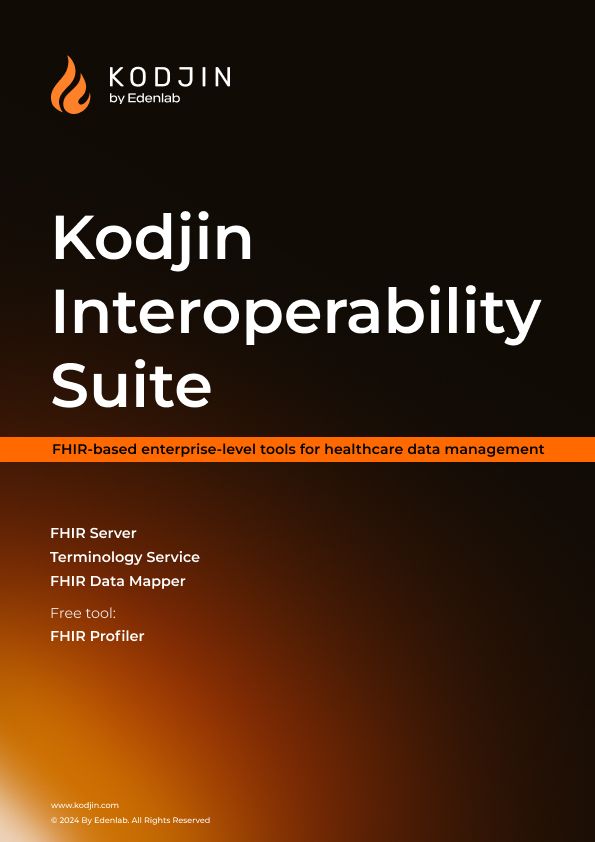IHE is an international organization that develops IHE (Integrating the Healthcare Enterprise) profiles. By promoting established standards (e.g., DICOM, HL7), the IHE organization supports healthcare workflows and optimal patient care. The work of the IHE organization implies profiling e-health use cases, developing a framework, and implementing these profiles into real-life projects across the globe.
IHE profiles are meant to serve as a foundation for integrating core healthcare standards into eHealth projects, fostering effective interoperability across the healthcare landscape. Ultimately, the overarching goal of IHE is to simplify the application of standards, reducing complexity and fostering interoperability across the healthcare landscape.
Learn more about:
- IHE profiles,
- IHE development process,
- opportunities that integration with such standards as the HL7 FHIR brings to all representatives of the healthcare domain.
Read also: FHIR vs HL7: Main Differences
The Essence of Integrating the Healthcare Enterprise (IHE)
What is an IHE profile?
The IHE Profiles offer a standardized framework developed by the IHE organization for addressing interoperability issues and sharing information between providers, patients, and payers.
IHE Profiles define the actors, transactions, and other information required to support clinical workflow as well as security and administration infrastructure. The methodology behind IHE is the ISO standard that outlines a structured approach to profile development:
- Identifying Use Cases: IHE forms from identifying specific healthcare use cases that require interoperability solutions.
- Selecting Standards: Working groups within IHE then identify relevant standards to address each use case, developing corresponding IHE profiles.
- Testing and Validation: Testing is an integral part of the IHE profiling cycle, ensuring that products compliant with IHE profiles meet the requirements of different projects. This rigorous testing process ensures cost savings and efficiency.
IHE operates on the principle of simplicity and adaptability. For simple point-to-point use case profiles, there is only one standard used. However, for more complex scenarios, multiple standards may be combined to address the requirements effectively.
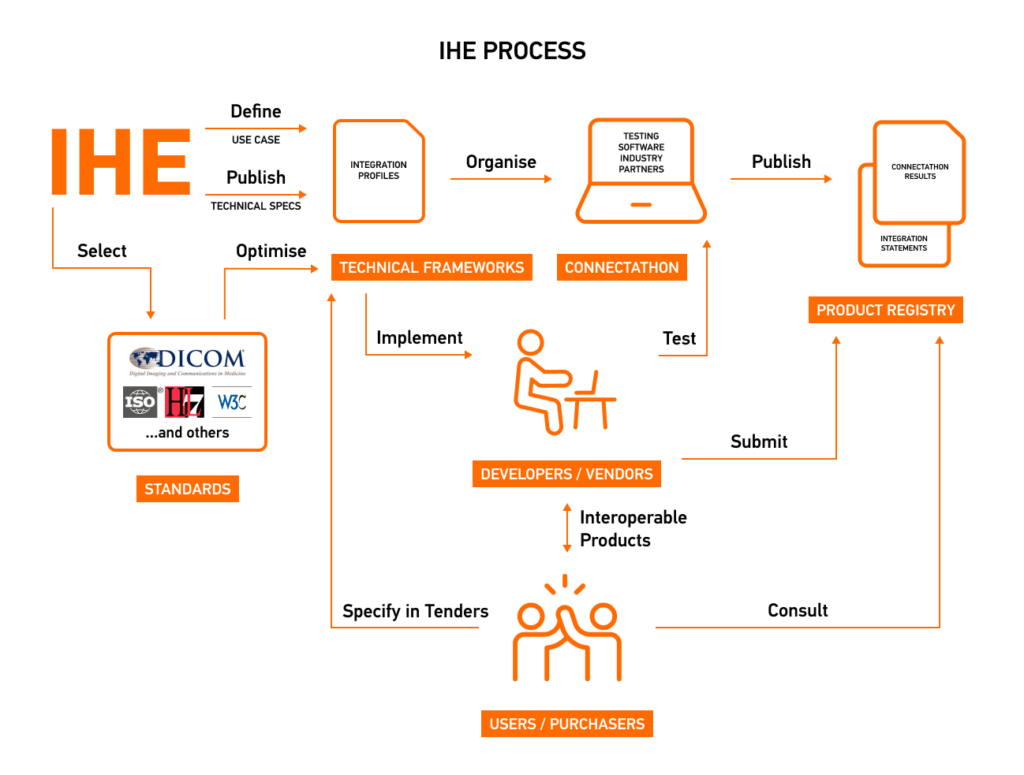
IHE has a specific approach to standardization: rather than standards being applied directly to projects, they become packaged at the IHE level into reusable building blocks.
Such an approach eliminates the need to develop new solutions, providing globally similar solutions for the same cases, leading to globally consistent solutions adaptable to individual country needs and reducing testing costs.
How is IHE related to FHIR?
FHIR (Fast Healthcare Interoperability Resources) is the standard developed by the Health Level 7 (HL7) standard development organization, which defines standardized methods for communication between diverse computer systems regardless of how it is stored in those systems.
FHIR has become the standard of choice for many national healthcare systems across the world that address the urgent need for efficient data exchange in response to the growing volume of health data and the evolving digital landscape in healthcare.
These two standards complement each other since FHIR governs the data model, whereas IHE standardizes healthcare use cases, particularly focusing on process perspectives.
IHE on FHIR: Use Cases
The integration of IHE profiles with FHIR has a proven capacity to transform data exchange practices within different domains.
Notably, the profiles that leverage FHIR are indicated by the FHIR icon next to them on the IHE profiles page for example.
In a hospital setting, IHE Profiles are often implemented alongside HL7 Integration to ensure that patient data is consistently transferred between systems. Let us share several scenarios where FHIR-enabled strategies within IHE offer solutions to enduring challenges in healthcare data exchange and management.
Read also: TEFCA in Healthcare
Basic Audit Log Patterns (BALP)
The BALP profile addresses the need for a robust audit trail, FHIR security, and node authentication by using FHIR as an access model and standardizing the logging of events, especially those involving patient data access.
This profile defines basic and reusable AuditEvent patterns for FHIR RESTful operations. It focuses on creating Privacy-centric AuditEvent logs that accurately indicate the Patient when they are the subject of the recorded activity.
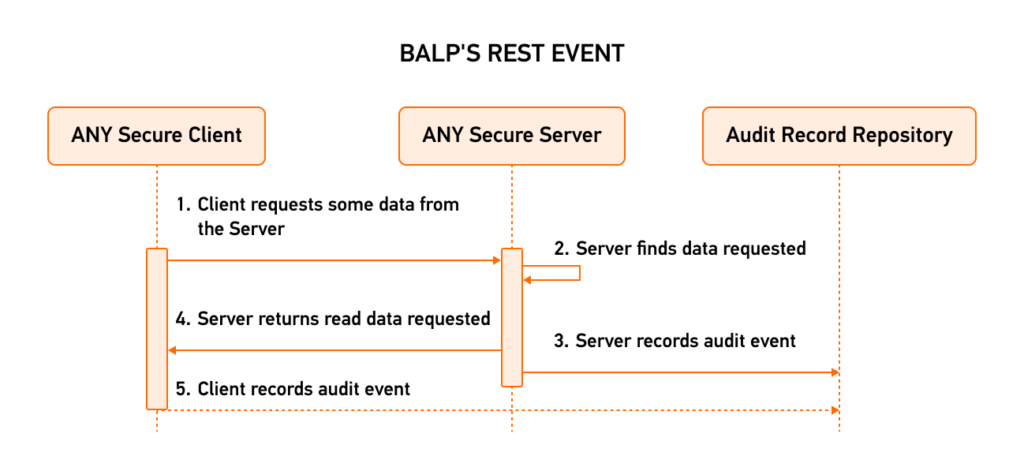
Edenlab’s team integrated the BALP profile into the Kodjin FHIR Server, enhancing it with advanced log storage, search, and monitoring features for real-time alerts and reporting to detect and manage security risks, ensure compliance with privacy regulations, and facilitate data integrity.
Mobile Access to Health Documents (MHD)
Initially, integrating IHE for cross-enterprise sharing relied heavily on protocols like SOAP, ebXML, and SAML, which have limitations in scalability and lack flexibility. Adding an FHIR-based interface to Mobile Health Document Sharing (MHDS), also known as XDS-on-FHIR, brings significant advantages since it allows for leveraging a RESTful approach for cross-enterprise exchange.
The RESTful FHIR interface makes document sharing more flexible and compatible with modern healthcare systems. In the context of IHE profiles, MHD actors grouped with XDS Document Sharing enhance interoperability and facilitate mobile access to health documents, enabling efficient and secure information exchange across healthcare organizations.

XDS-on-FHIR enables seamless document exchange between systems, regardless of the underlying technology stack. Additionally, MHDS supports a wide range of document formats, allowing for greater interoperability across diverse healthcare systems.
Non-Patient File Sharing (NPFS)
While covering patient-related data sharing, the need to make non-patient files, such as templates and forms, available for sharing and consumption within healthcare systems required a specific approach to non-patient file sharing. Moreover, the stakeholders’ request was to establish automation of the process and integrate it into Electronic Medical Records (EMRs), eliminating the manual effort of managing and accessing these files.
Leveraging FHIR’s capabilities for IHE profiles enables the creation of standardized interfaces for accessing and sharing non-patient files. These interfaces facilitate the seamless retrieval of non-patient files by EMRs from community or nationwide resources. This eliminates the manual effort previously required for copying and updating these files, making the process more efficient and streamlined.
For example, when a healthcare organization aims for consistency in the appearance of XML Laboratory Reports, they can use NPFSm profile that uses FHIR specification to create a corresponding stylesheet file, allowing a technician to upload this stylesheet to a system accessible to all involved Laboratory Information Systems (LIS).
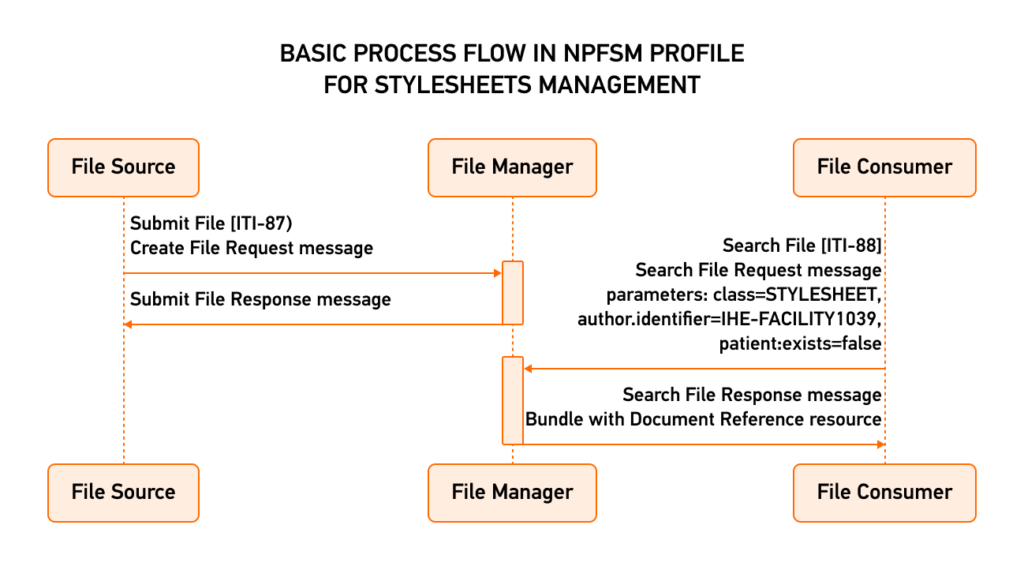
NPFSm ensures all LISs within a healthcare organization can access and use the same stylesheet, supporting consistency in how Laboratory Reports are displayed, potentially enhancing the accuracy and efficiency of healthcare data management.
Patient Care Coordination Profiles
Coordinating patient care across diverse medical domains and workflows can be challenging due to the lack of standard ways to create and keep care plans updated. A standardized FHIR approach ensures care teams work well together while supporting various healthcare workflows.
For example, the Dynamic Care Planning (DCP) profile provides the structures and transactions necessary for creating, updating, and sharing care plans to support workflow for providers, patients, and payers. The Dynamic Care Planning Profile depicts how multiple care plans are shared among contributors to coordinate care for better collaboration and improved patient management.
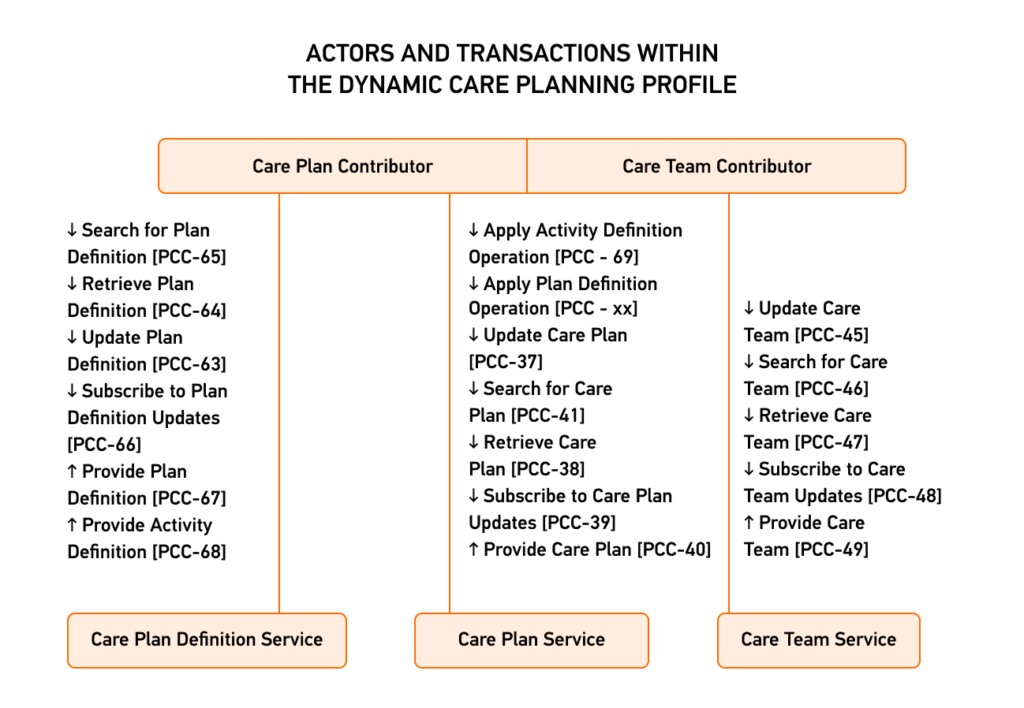
FHIR-first care plans are up-to-date since patients interact with the healthcare system, allowing for real-time care coordination across multiple clinicians and service sites. This approach reduces fragmentation and duplicates, hence positively affecting healthcare costs.
Why Use IHE on FHIR?
These were just a few use cases illustrating the advantages of the collaborative efforts between IHE and HL7 FHIR. FHIR’s integration with IHE profiles enhances collaboration among healthcare teams, streamlines care planning processes, and facilitates the seamless sharing of patient information, ultimately improving the efficiency of healthcare delivery and patient outcomes.
FHIR-based IHE profiles address gaps in healthcare workflows caused by fragmented systems and disparate data exchange rules. Through the standardization of communication protocols and data exchange formats, FHIR facilitates the smooth integration of IHE profiles, thus optimizing information exchange throughout healthcare systems.
If you consider implementing IHE or FHIR-based solutions to enable seamless interoperability and enhance coordination with a healthcare entity, do not hesitate to contact us.
Our team boasts a proven track record in FHIR development services, managing complex and high-load projects while focusing on healthcare data interoperability. We are dedicated to delivering tailored solutions that meet your interoperability needs and improve care coordination.
FAQs
- What are IHE Profiles?
IHE Profiles define foundational elements of healthcare data exchange (e.g., actors, transactions) for integrating core healthcare standards into eHealth projects to enhance interoperability.
- What’s the difference between IHE Profiles and FHIR?
While the FHIR standard enables the exchange of healthcare data using modern internet-based methods, IHE Profiles specifies how actors should leverage standards like FHIR to address specific use cases.
- What is better: IHE or FHIR?
The FHIR standard governs the data model, while IHE profiles focus on use cases. Hence, using these standards in tandem allows target interoperability issues from multiple perspectives.







